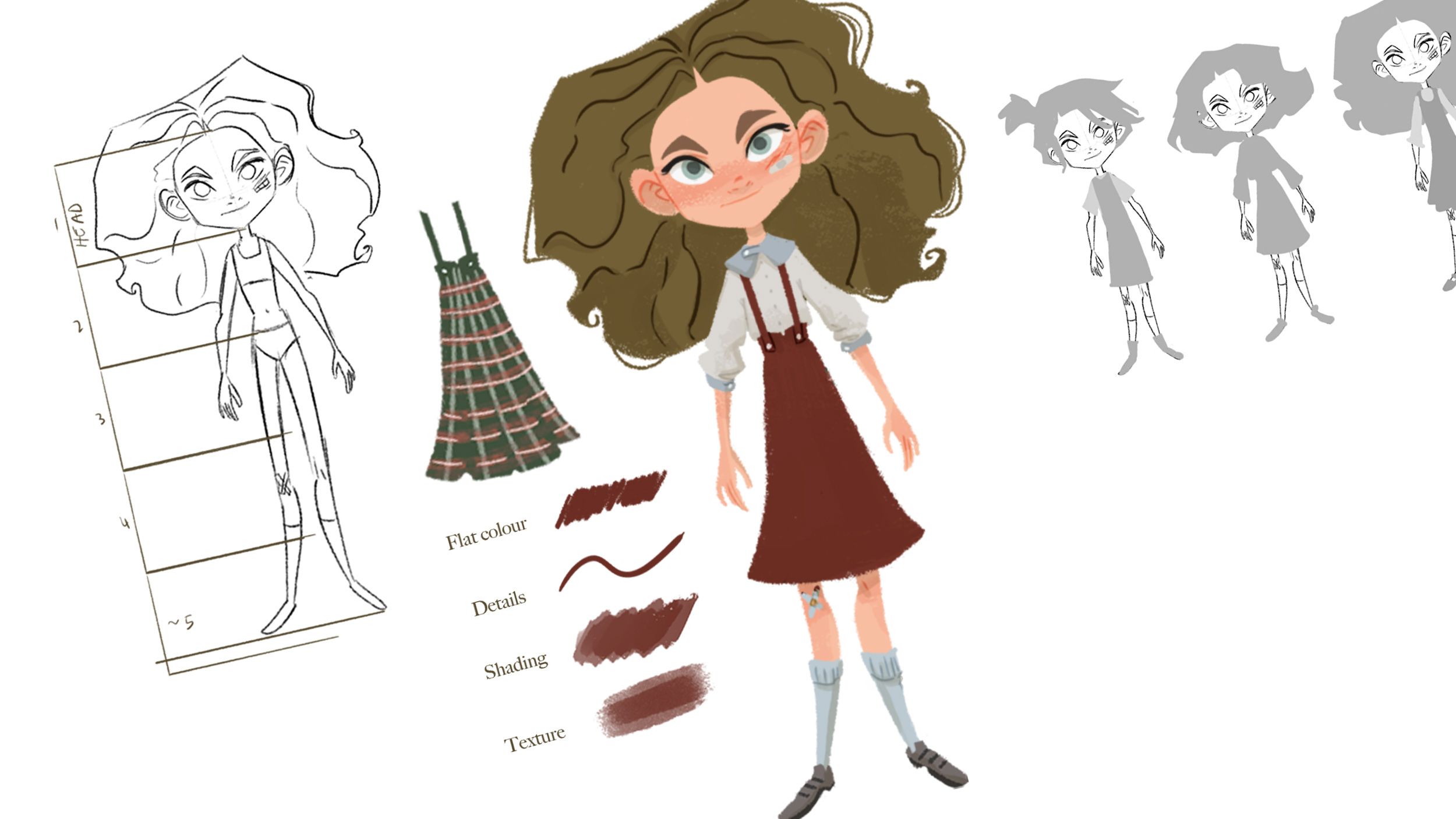
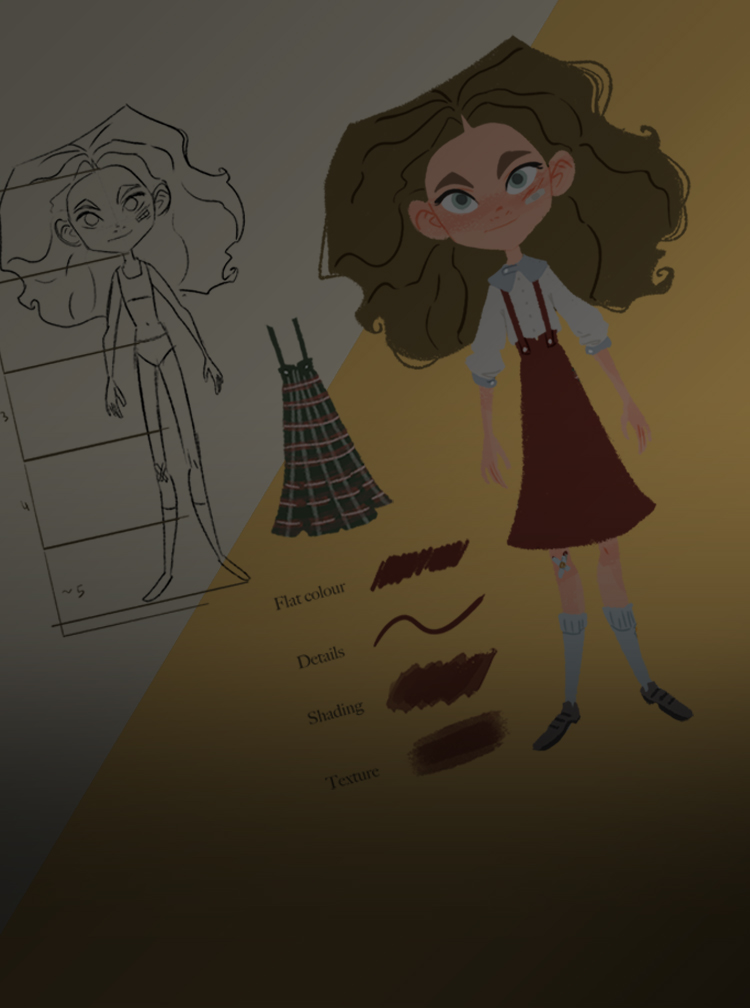
Maria Lia Malandrino is an Italian illustrator and visual development artist working as a freelancer in Turin, Italy. Since 2017 she has been working for publishing houses and brands such as Disney, Oxford University Press, Hachette and others.
Are you excited at the thought of drawing for a living, being paid to do what you really love?
While it is definitely thrilling, being a freelance artist involves A LOT more than just drawing. All the various responsibilities that come with being your own boss, such as pricing, client communication, and review rounds can have a big effect on the final artwork, time involved and even your income! The practical aspects of working with clients can often be overwhelming for those starting out, but it doesn’t have to be for you.
In this course, you’ll discover the workflow of a professional freelance artist, Maria Malandrino, who has worked on a host of various art projects throughout her career. She will share with you how to structure your workflow, deal with clients, create an art style for a brief, write up a contract and more. PLUS she will also walk you through an entire character design from start to finish just as if it was a real-life project for an actual client!
Learn her thought process, tips for boosting creativity, the stages of production and in-depth character stylization. This course sheds light on the daily routine of a freelance artist, with the aim of helping you find your own path as a professional in this industry.
Welcome to Stylized Characters Part 2! – Stylized Characters for Freelance Projects.
This course sheds light on the daily routine of a freelance artist, with the aim of helping you find your own path as a professional in this industry. In this introductory lesson, Maria gives you an overview of what to expect from this value-packed course.

The way you express a message is almost as important as the message itself. In this lesson, Maria explains the basics of Communication Theory and how it’s essential to understanding your audience and ensuring the message of the artwork is received by them in the way that you intend.
She explains Berlos’s SMCR Model with clear, practical examples and demonstrates an easy method to use the principles in your freelance projects.
Maria takes an example from a past project, showing how she delivered style samples to land a job with a publishing company. She discusses how to nail the style of your artwork to meet the client’s expectations and connect with the target audience.
Don’t know who your target audience is? Maria will show you how to identify them.

Maria explains what a marketing persona is, why it’s useful and how to create one. The decision-making and design process gets a lot easier once you know which audience you are targeting and what their interests are.
She also sets up a mock brief to follow throughout this course, and shows you how you can do the same to prepare for future real-world projects.
How do I set my price?? This question has plagued many freelance artists, and while there is no one overarching answer across the board, there ARE important factors to take into consideration when setting your prices.
Maria discusses this subject in detail, giving tips for maintaining a good working relationship with clients, while at the same time not underselling your work.
Find out what tools freelancers use to streamline their creative process and organize their work to avoid things falling through the cracks or deadlines being missed.
Maria shares the exact software she uses for backups, reference collections, communication with clients and file organization, and recommends strategies she personally uses, which you can implement right away.

Your unique style comes from the combination of many different influences. Discover why professional artists use references and how you can find good images for your project, to narrow your focus and save yourself a lot of time too!
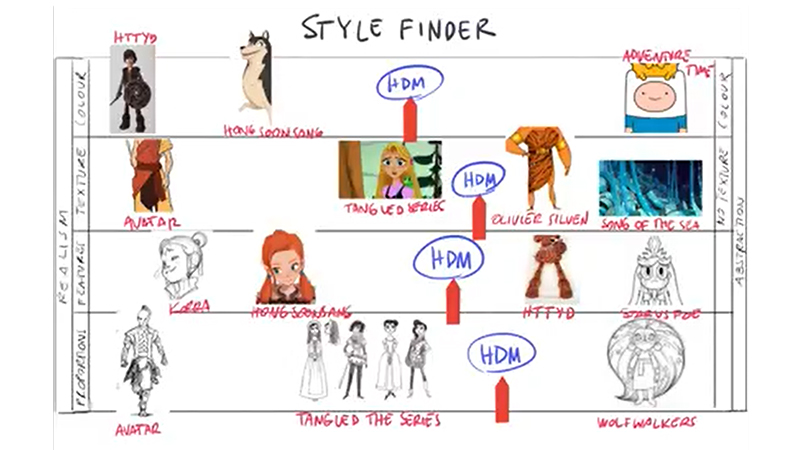
Create Style Finder Chart with Maria in this lesson. A style finder is a useful tool to identify one’s chosen style by comparing all the references found.
It can be shared with the client or your team to help nail down the style of the illustrations at the project’s onset. Learn about strokes, renders, primary & secondary proportions and how to adjust them all.
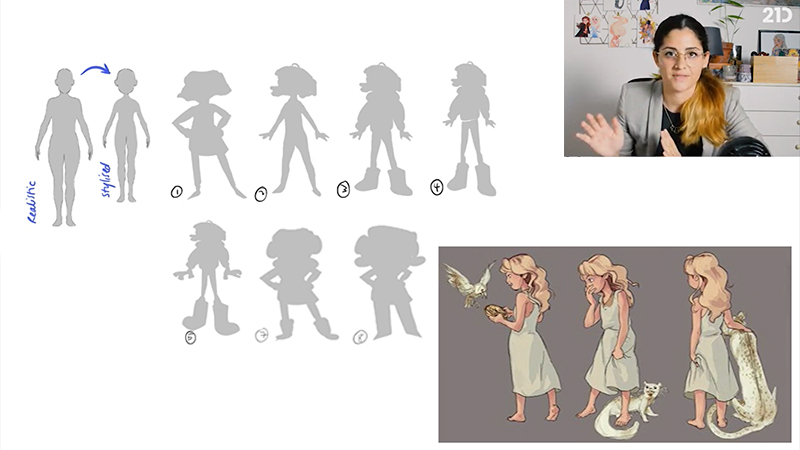
Now is time for putting pen to paper – at last!
First practical step in the process is creating rough thumbnails from shapes. These are presented to the client for feedback, to know if you are headed in the right direction before spending time adding lots of details.
Maria guides you through the steps of creating these thumbnails using the lasso, scale and resize tools and points out things to keep in mind.
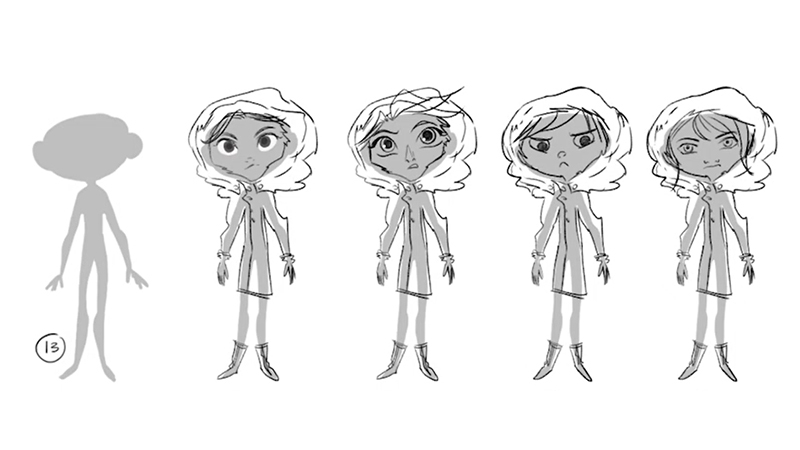
Taking the basic silhouette a step further, Maria adds secondary features and details.
Discover how she quickly creates multiple variations of the character and numbers them carefully, in order to choose the very best one.
Working further on the character by playing around with hairstyles and outfits, Maria puts together features from different options to finalize the character’s look.
Remember that these features should be in line with the worldbuilding and the character’s personality and relatable to your target audience.
Have fun with colors in this lesson! You’ll discover practical steps for creating base layers of color, making it easy to adjust the tones and hues later on if you want to change them.
Maria also discusses colour palette options for the character and the reasoning behind choosing certain colors.
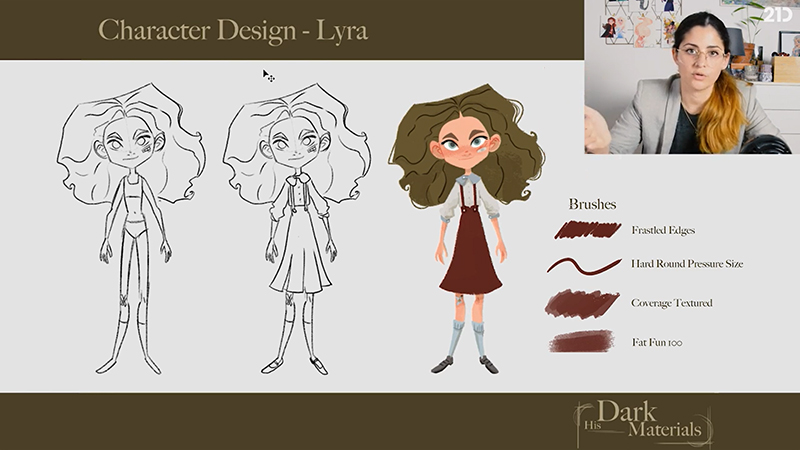
An ‘Art Bible’ is a collection of references, characteristics and features that make up the overall style of your characters and the world they live in.
It helps you/your team reproduce that set style for other characters and objects to maintain consistency and stay on track. Follow along as Maria creates one and talks about the various sections that are important to include.
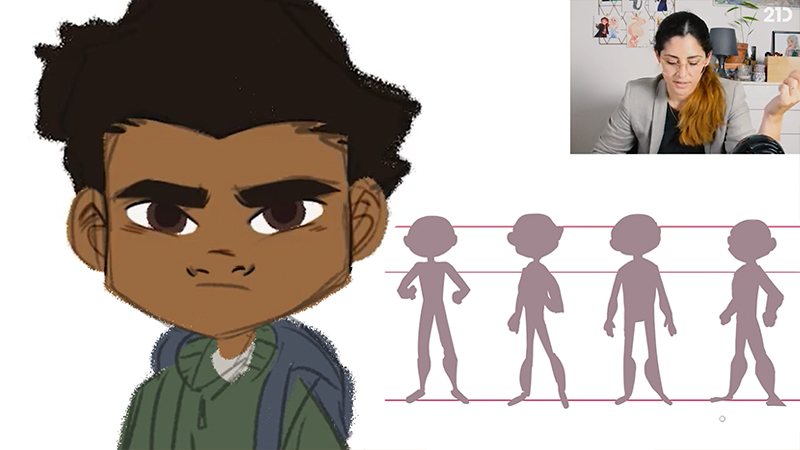
Now that you have the basic process down for creating a character, Maria will show you how to apply this to designing an entire character lineup in the same artistic style, the first character being a little child.
Watch her process starting with basic shapes and moving on to choosing hairstyles, expressions, color palettes and more.
A slightly tricker task: Creating an animal character in the chosen style. It can be done though!
Maria demonstrates how to choose poses and stay consistent with the main stylistic features she developed, while factoring in the animal’s unique anatomy and personality. She demonstrates all this with a few different animals, hitting ‘two birds with one stone’.
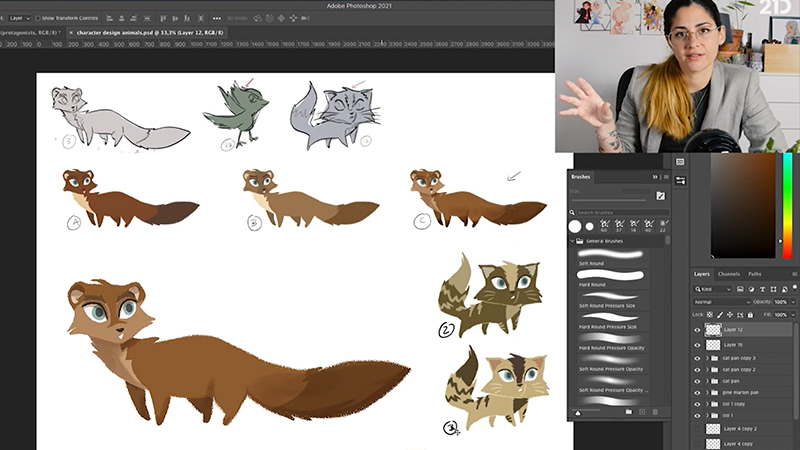
This lesson builds on the previous one of designing animal characters. Maria walks you through her coloring process of two animals: a cat and marten.
She defines their shapes and adds all the details, explaining her thought process as she goes.
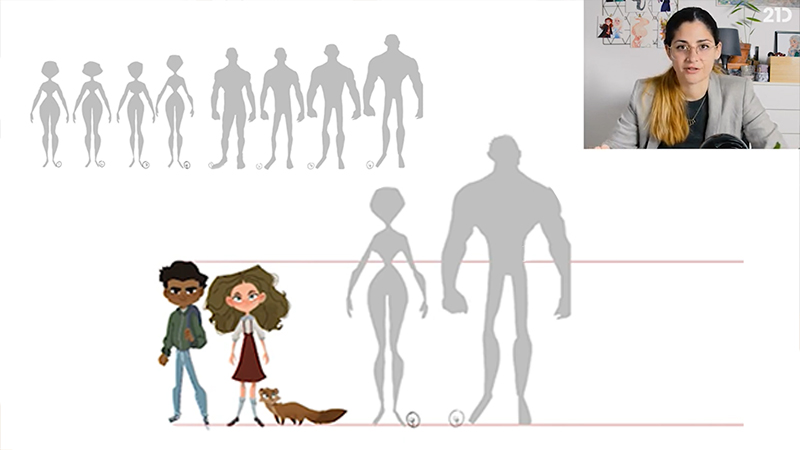
Welcome to Stylized Characters Part 2! – Stylized Characters for Freelance Projects.
This course sheds light on the daily routine of a freelance artist, with the aim of helping you find your own path as a professional in this industry. In this introductory lesson, Maria gives you an overview of what to expect from this value-packed course.
The way you express a message is almost as important as the message itself. In this lesson, Maria explains the basics of Communication Theory and how it’s essential to understand your audience and ensure the message of the artwork is received by them in the way that you intend.
She explains Berlos’s SMCR Model with clear, practical examples and demonstrates an easy method to use the principles in your freelance projects.
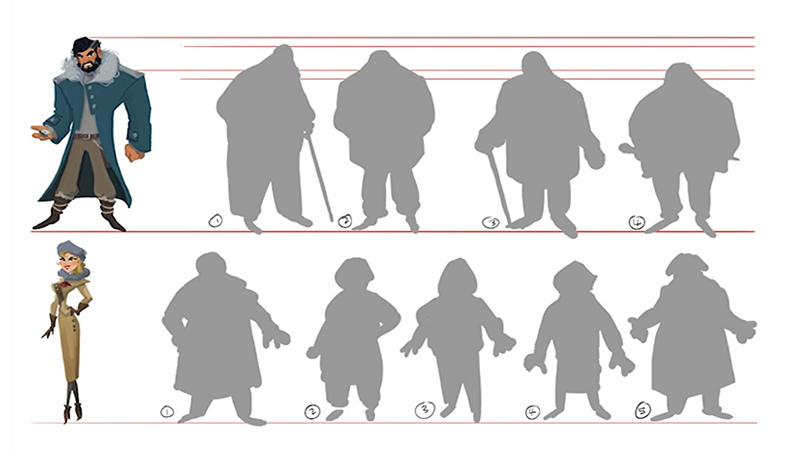
Next up: drawing elderly characters of both genders! You’ll get practical tips on how to make characters look older, such as the effect of gravity and drawing convincing wrinkles.
Maria demonstrates how to enhance a character’s personality and role by emphasizing certain body parts and using props.
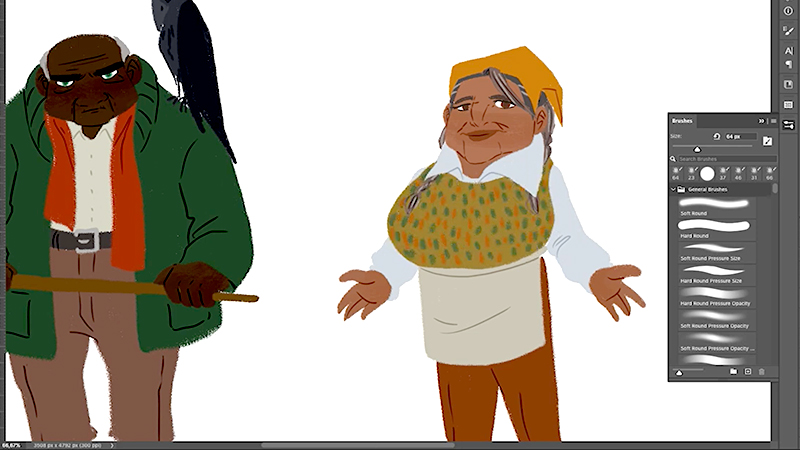
After finalizing the lineart for the two elderly characters, Maria moves on to the coloring and rendering stage of the design, again following the style previously established.
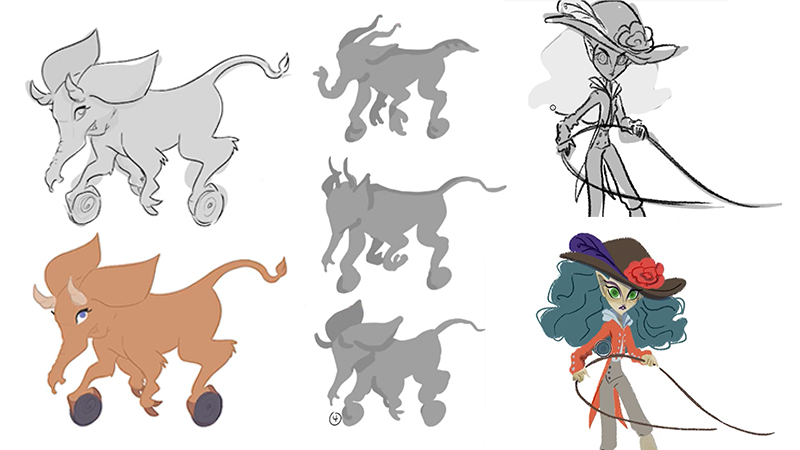
Let your imagination go wild in this lesson: Drawing a fantastical creature of your choice!
In this video you’ll discover tips on how to use real-life animal references to work off of, mix and match animals using the lasso tool and create cool fantasy colour palettes.
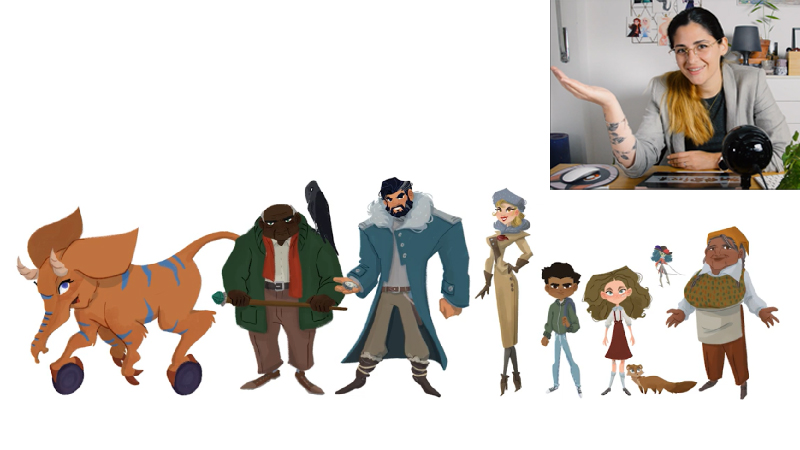
In this video, Maria wraps up the main goals of the course and gives hints for further independent studying on the subject. She also gives some advice regarding the submission of a character design project to clients or the creation of a portfolio for personal use.
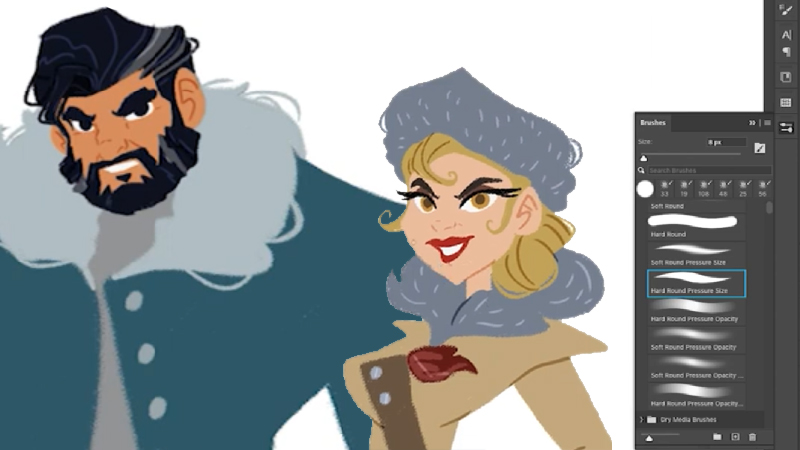
Course rating
(Based on 28 reviews)

Maria is an illustrator and story artist from Turin, Italy. She has a BA degree in Magazine Publishing from the University of the Arts London, has studied Traditional Animation at the International School of Comics in Turin and attended a masterclass in Storyboarding at the online school CGMA.
Follow Maria on
Full bio21 Draw is an online learning community where students of all skill levels can learn how to be a better artist. Our contributing artists and instructors are the best in the world.
Our streaming platform on www.21-draw.com makes it possible for anyone to watch hundreds of video lessons by industry legends who have worked for Disney, Marvel, DC, Dreamworks, Pixar & more. A membership gives full access to our streaming platform.
On books.21-draw.com you can buy our popular learn-to-draw ebooks and physical books, separate from the courses, and they too are also delivered to you by the heavyweights of the art industry.
Membership includes unlimited access to all 50+ courses taught by the world’s best artists PLUS new courses as they are released.
Each class includes 10-20 video lessons that are 7 minutes long on average. Most classes include exercise sheets, assignments, and layered PSD or PNG files.
Some classes include the ability to chat with the instructor in a public forum, e.g. if you want feedback on your artwork.
Yes! When you complete a 21 Draw course, you will receive a certificate of completion, which you can download and share with your friends, relatives, co-workers, and potential employers!
21 Draw courses are on-demand (pre-recorded) video tutorials that you can watch online with any digital devices anytime and for an unlimited number of times! This means you can easily watch (and rewatch) them at your own pace and convenience.
We have classes for all levels, even for those with zero drawing experience. In general, artists at all levels can benefit from these courses—whether beginner, intermediate or advanced.
Many lessons in our courses apply to both digital and traditional art. In a few tutorials, digital drawing software, e.g. Photoshop or Procreate for iPad is required. However, for the majority of lessons it is more about the underlying concepts and all that is needed is a pen and paper.
You can download the course resources (exercise sheets, assignments, PSD files, etc.) from the site, but you cannot download the video lessons to your computer.
Normally it costs $1835/year. However, there is a special sale running now for a limited time: Save 75%! This means you can get an annual membership for just $461 HKD/year.
If you purchase the annual membership at a discounted price, it will remain at that price for each consecutive year, so long as your membership is not cancelled.
If for any reason at all you are unhappy with our courses or feel it isn’t what you are looking for—then just fill out this form or email us at [email protected]. We’ll be more than happy to give you a full refund within 30 days of your first purchase. No questions asked. Just a guarantee you can trust.
You can easily cancel your membership renewal on your My Account page. Follow the prompts to cancel (Billing > Change Plan > Cancel Membership) and your membership will immediately be terminated. Please note: Refunds ONLY possible within 30 days after the date of purchase.
If you have more questions, please check out our Knowledge base or write to us here. We’re happy to assist in any way we can!
